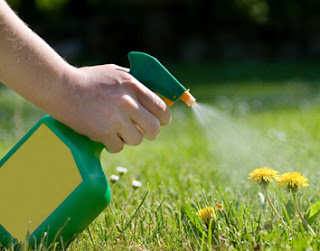
So you are done with putting everything on paper and all set to design a residential landscape. While developing a master plan is the most important step beyond doubts, there are also small titbits to be taken care of in the design process. Check if you have put them all in sync by running a step-by-step verification method. These also must include environmental conditions besides what you desire and must follow the elements and principles of design. Only an organized goal shall lead to a landscape that satisfies you aesthetically; be functional as well as environmentally sustainable.
Essential points to be noted before everything:
i. Understand the chosen site. It’s a must for proper plant selection and activities you want to hold there.
ii. Consider and differentiate between your wants and needs.
iii. Chalk out a form/style theme. It will help in determining and organizing shapes and spaces that you’ll create and link.
iv. Designate activity areas and link them with the elements you want in the site.
v. Consider the plants keeping both the environment and the user in mind.
vi. Structure the plantings using massing and Lawn Mowing Businesses for Sale techniques. Sustainable designs protect resources.
vii. Highlight the transition areas and the focal points.
viii. Determining details, such as materials, colours and surface textures, are paramount.
ix. Growth and maintenance of plants take time; choose them accordingly.
Essential design processes:
There are a total of five design processes to check that can be broadly categorised under two heads:
i. Establishing the aesthetic, functional and horticultural requirements for the landscape’s design:
• Conducting site inventory: This is a critical step for both plant selection and placement; for locating family activities and functions. It's important because the climatic conditions that affect the plants (temperature, humidity, rain, wind, and sunlight) also affect you.
ii. A thorough analysis of the inventory: It is about taking into account the soil type, drainage, climate conditions and existing vegetation.
• A thorough inventory and analysis of the site is important to determine the environmental conditions for plant growth and the best use of the site. Issues of concern include the soil type, topography and regional climate. Proper selection of the soil type is the most important of all; it determines the nutrients and moisture that will be available to the plants.
• Determining your needs: Making a list of your needs and wants helps in determining the way you’ll use your yard and landscape.
iii. Application of those requirements to the creation of the final landscape plan:
• Development of conceptual design plans: It is a great help towards establishing a theme for the form and style of the chosen design. It proves to be useful in locating activity spaces on the site and the development of a conceptual plan.
• Finalising on the plans: The last step, with all the details giving shape to the final design; Lawn Care Business for Sale comprises everything necessary for installation.
Essential points to be noted before everything:
i. Understand the chosen site. It’s a must for proper plant selection and activities you want to hold there.
ii. Consider and differentiate between your wants and needs.
iii. Chalk out a form/style theme. It will help in determining and organizing shapes and spaces that you’ll create and link.
iv. Designate activity areas and link them with the elements you want in the site.
v. Consider the plants keeping both the environment and the user in mind.
vi. Structure the plantings using massing and Lawn Mowing Businesses for Sale techniques. Sustainable designs protect resources.
vii. Highlight the transition areas and the focal points.
viii. Determining details, such as materials, colours and surface textures, are paramount.
ix. Growth and maintenance of plants take time; choose them accordingly.
Essential design processes:
There are a total of five design processes to check that can be broadly categorised under two heads:
i. Establishing the aesthetic, functional and horticultural requirements for the landscape’s design:
• Conducting site inventory: This is a critical step for both plant selection and placement; for locating family activities and functions. It's important because the climatic conditions that affect the plants (temperature, humidity, rain, wind, and sunlight) also affect you.
ii. A thorough analysis of the inventory: It is about taking into account the soil type, drainage, climate conditions and existing vegetation.
• A thorough inventory and analysis of the site is important to determine the environmental conditions for plant growth and the best use of the site. Issues of concern include the soil type, topography and regional climate. Proper selection of the soil type is the most important of all; it determines the nutrients and moisture that will be available to the plants.
• Determining your needs: Making a list of your needs and wants helps in determining the way you’ll use your yard and landscape.
iii. Application of those requirements to the creation of the final landscape plan:
• Development of conceptual design plans: It is a great help towards establishing a theme for the form and style of the chosen design. It proves to be useful in locating activity spaces on the site and the development of a conceptual plan.
• Finalising on the plans: The last step, with all the details giving shape to the final design; Lawn Care Business for Sale comprises everything necessary for installation.
No comments:
Post a Comment